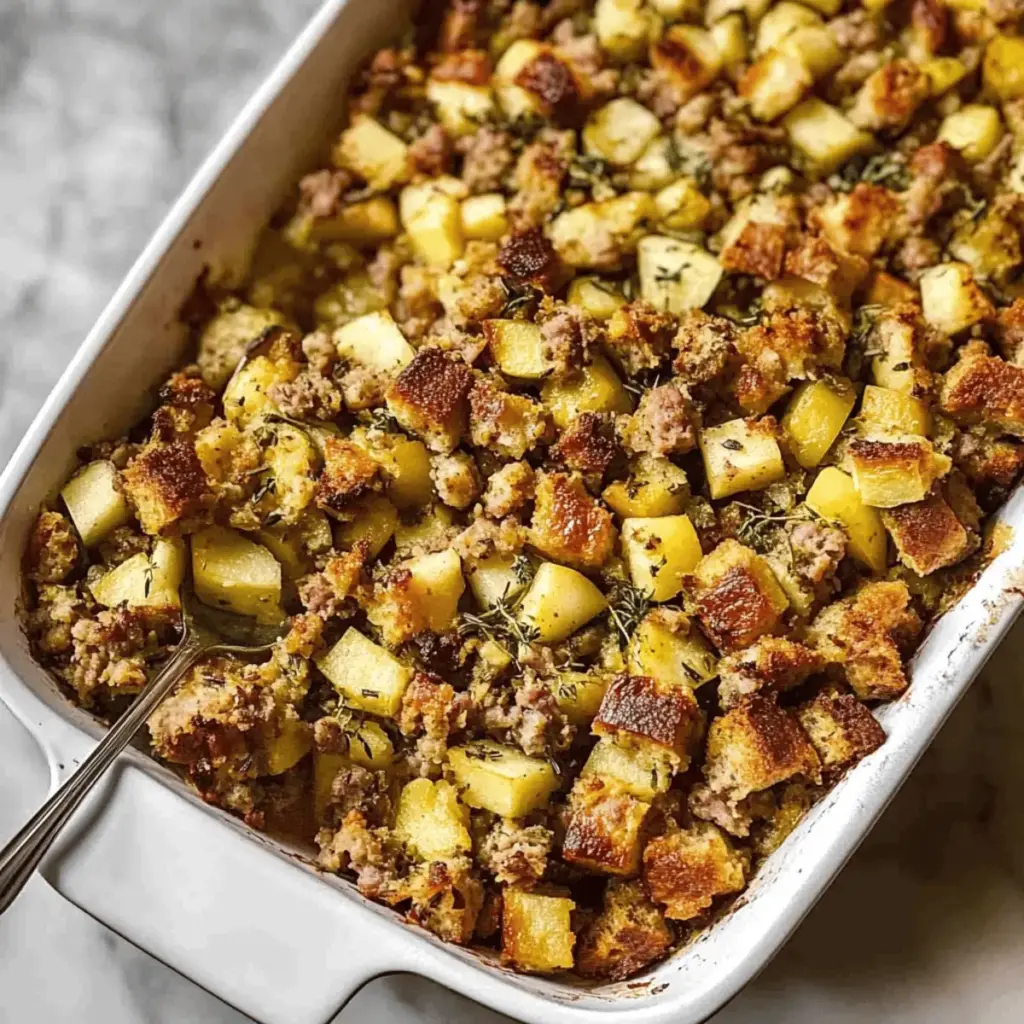As the aroma of sizzling pork belly fills the kitchen, take a moment to savor the anticipation. I recently discovered a recipe that’s fast becoming a favorite in our home: Spicy Korean Pork Belly, also known as Duru Chigi. This dish is not only delightfully simple to prepare but also gluten-free and dairy-free, making it accessible for many diets. The rich, savory notes of gochujang paired with caramelized onions create an irresistible experience that will have everyone coming back for seconds. Whether you’re a seasoned home-chef or just tiring of takeout, this flavorful dish promises to inject some excitement into your weeknight dinners. Ready to dive into the fiery world of Korean cooking? Let’s get started!

Why is Spicy Korean Pork Belly a Must-Try?
Easy Cooking: This Spicy Korean Pork Belly recipe is a breeze to follow, requiring minimal prep time and basic culinary skills.
Bold Flavors: The combination of gochujang and caramelized onions delivers a flavor profile that’s both spicy and savory, making it incredibly satisfying.
Versatile Serving: Serve it wrapped in butter lettuce for a fun twist, or pair it with cooked rice for a hearty meal.
Diet-Friendly: With gluten-free and dairy-free ingredients, it’s perfect for various dietary needs without compromising on flavor.
Crowd-Pleaser: Whether you’re entertaining guests or just feeding the family, this dish is sure to impress. If you’re a fan of flavorful dishes, don’t forget to check out my Spicy Thai Basil recipe for another winning meal!
Spicy Korean Pork Belly Ingredients
• Discover the perfect blend of flavors!
For the Pork
- Pork Belly – The main protein source, providing rich flavor and a satisfying fat content.
- Ground Ginger – Adds warmth and a slight spice; fresh ginger can be substituted for a fresher taste.
- Freshly Ground Black Pepper – Contributes a hint of heat; can be replaced with white pepper for a milder flavor.
For the Marinade
- Gochujang (Korean Red Pepper Paste) – The primary seasoning, lending both heat and umami to the dish.
- Gochugaru (Korean Red Pepper Flakes) – Adds extra spice and smokiness; substitute with another chili flake if needed.
- Soy Sauce – Provides saltiness and depth; tamari works as a gluten-free alternative.
- Mirin (Sweet Rice Wine) – Adds sweetness and balance; can be replaced with sugar and water mixture.
- Honey – Natural sweetener to balance the heat; agave syrup may be a substitute.
- Toasted Sesame Oil – Provides a nutty aroma and richness; can swap for another oil, but flavor will change.
- Garlic (minced) – Contributes savory depth; can use garlic powder in a pinch but fresh is recommended.
- White Onions (sliced) – Provides sweetness and texture; yellow onions can be a good alternative.
For Cooking
- Canola Oil – Used for sautéing; replace with vegetable oil or sesame oil for extra flavor.
- Scallions (trimmed and chopped) – Adds freshness and a subtle onion flavor; can use chives as an alternative.
- Kosher Salt – Enhances overall flavors; adjust to taste based on soy sauce quantity.
- Toasted Sesame Seeds – For garnish, adding texture and visual appeal.
For Serving
- Cooked White Rice – To serve alongside; substitutes could include brown rice or cauliflower rice for a low-carb option.
- Butter Lettuce Leaves – For wrapping the pork; iceberg lettuce or cabbage leaves can also be used for a crisp wrap.
With these Spicy Korean Pork Belly ingredients, you’re on your way to creating an unforgettable meal!
Step‑by‑Step Instructions for Spicy Korean Pork Belly
Step 1: Prepare Pork
Begin by cutting your pork belly into bite-sized cubes and placing them in a large bowl. Season the pork with ground ginger and freshly ground black pepper, massaging the spices into the meat until evenly coated. This vibrant seasoning will enhance the rich flavor of the pork belly, laying a flavorful foundation for your Spicy Korean Pork Belly.
Step 2: Make Marinade
In a separate bowl, whisk together gochujang, gochugaru, soy sauce, mirin, honey, toasted sesame oil, and minced garlic. Mix until fully combined, creating a thick, aromatic marinade. This mixture acts as the heart of your dish, bringing both heat and umami that will infuse the pork belly, ensuring a robust flavor profile in every bite.
Step 3: Combine Ingredients
Add the sliced white onions to the seasoned pork belly along with the marinade. Toss everything together, making sure that the pork and onions are generously coated with the spicy mixture. Cover the bowl and let it marinate at room temperature for 30 minutes. This resting period allows the flavors to meld beautifully, intensifying the taste of your Spicy Korean Pork Belly.
Step 4: Cook
Heat a large skillet over medium heat and add canola oil, swirling it to coat the pan. Once the oil shimmers, add two-thirds of the chopped scallions and sauté for about 2 minutes until fragrant. Then, introduce the marinated pork belly to the skillet, cooking for 20-25 minutes. Stir occasionally, allowing the moisture to evaporate and the pork to develop a slightly crisp exterior while remaining tender inside.
Step 5: Serve
Once the pork belly is cooked through and beautifully caramelized, transfer it to a serving bowl. Garnish the dish with sesame seeds and the remaining chopped scallions for a fresh touch. Serve your Spicy Korean Pork Belly alongside cooked white rice and vibrant butter lettuce leaves for wrapping. This presentation not only looks enticing but also invites your guests to enjoy a fun, hands-on dining experience.

Spicy Korean Pork Belly Variations
Feel free to unleash your creativity and make this Spicy Korean Pork Belly truly your own!
-
Vegetable Boost: Add sliced bell peppers or snap peas for added crunch and nutrition in every bite. These vibrant veggies not only enhance flavor but also make the dish more colorful.
-
Pork Swap: Try using chicken thighs or tofu instead of pork belly for a lighter option. Both alternatives absorb the marinade beautifully while offering unique textures to enjoy.
-
Heat Level Adjustments: Scale back or amp up the gochujang according to your spice preferences. A touch of sweetness can be added with more honey for those who like it mild.
-
Sweet Twist: Incorporate diced pineapple or apples into the dish for a sweet and savory contrast. These fruits caramelize when cooked, creating a glaze that adds a delightful surprise to each bite.
-
Herb Infusion: Toss in fresh herbs like cilantro or Thai basil during the cooking process for a fragrant twist that elevates the traditional flavors. Fresh herbs can introduce a lovely brightness to the dish.
-
Aromatic Upgrades: Try using shallots instead of onions to provide a sweeter, milder flavor. Their subtle taste complements the spice well, creating a harmonious balance.
-
Rice Alternatives: Swap out white rice for brown rice or cauliflower rice for a heartier or low-carb option. Each substitute brings a new texture and nutritional profile to your meal.
-
Wrap Variations: Use rice paper wraps for a unique presentation that adds an Asian-inspired flair to your meal. This fun twist creates an interactive dining experience that keeps appetites engaged.
As you experiment with these variations, consider pairing your Spicy Korean Pork Belly with my Garlic Butter Pork Chops for a well-rounded feast!
Make Ahead Options
These Spicy Korean Pork Belly prep options are perfect for busy weeknights! You can marinate the pork belly with the gochujang mixture and sliced onions up to 24 hours in advance for maximum flavor infusion. Simply mix the marinade, toss it with the pork and onions, then cover and refrigerate. This allows the flavors to meld beautifully, ensuring your dish will be just as delicious when cooked. When you’re ready to serve, just sauté the marinated pork belly in a skillet as instructed, and you’ll have a mouthwatering meal with minimal effort. Pair with freshly cooked rice and lettuce leaves for an easy wrap that everyone will love!
What to Serve with Spicy Korean Pork Belly
Create a meal that balances the rich and spicy flavors of your dish with these delightful pairings.
-
Steamed Jasmine Rice: Its fluffy texture soaks up the flavorful sauce, making each bite perfectly satisfying.
-
Crisp Butter Lettuce Wraps: These fresh leaves add a crunchy component, allowing you to enjoy the pork in a fun, interactive way.
-
Korean Cucumber Salad: The cool and tangy cucumber salad offers a refreshing contrast to the spicy pork, brightening your meal.
-
Pickled Radish: Adding a bit of tartness, these pickles elevate the overall flavor profile and cleanse your palate after each rich bite.
-
Sautéed Bok Choy: The tender greens bring a mild, slightly sweet flavor that helps balance the heat and enhance the dish’s freshness.
-
Cold Beer or Soju: A chilled beverage can complement the heat of the Spicy Korean Pork Belly, creating a harmonious dining experience. Enjoy a local craft beer or traditional Korean soju for the perfect match.
Expert Tips for Spicy Korean Pork Belly
-
Massage the Meat: Always massage the seasoning into the pork belly for optimal flavor infusion; it makes a significant difference in taste and tenderness.
-
Watch the Cooking Time: Keep an eye on your pork belly while cooking; overcooking can lead to an overly crispy exterior and dry meat.
-
Pre-soak Lettuce Leaves: For the best wrap experience, soak butter lettuce leaves in cold water before using; this keeps them crisp and fresh, making your Spicy Korean Pork Belly even more enjoyable.
-
Adjust Spice to Taste: If you’re sensitive to heat, start with a smaller amount of gochujang and gradually add more. It’s easier to add spice than to tone it down!
-
Use Fresh Ingredients: Whenever possible, opt for fresh garlic and ginger instead of powdered versions for a bright and vibrant flavor in your Spicy Korean Pork Belly.
How to Store and Freeze Spicy Korean Pork Belly
Fridge: Store any leftover Spicy Korean Pork Belly in an airtight container for up to 3 days. This keeps the flavors fresh and allows for easy reheating.
Freezer: For longer preservation, freeze cooked pork belly in single portions. Wrap it tightly in plastic wrap followed by aluminum foil, and it will last for up to 2 months.
Reheating: Thaw frozen pork belly in the fridge overnight before reheating. Warm it in a skillet over medium heat until heated through, stirring occasionally to maintain moisture.
Room Temperature: Avoid leaving Spicy Korean Pork Belly at room temperature for more than 2 hours to ensure food safety. Always refrigerate promptly after serving.

Spicy Korean Pork Belly (Duru Chigi) Recipe FAQs
How do I select ripe ingredients for this dish?
Absolutely! For the best results, choose pork belly with a good balance of meat and fat; the fat ensures juicy and tender results. Look for pork with creamy white fat and a good pink hue. For the onions, select firm white onions without any dark spots or soft areas. Fresh garlic and ginger should be aromatic; if they smell musty, they might not be fresh.
What is the best way to store leftovers?
After enjoying your Spicy Korean Pork Belly, store leftovers in an airtight container in the fridge for up to 3 days. This way, they stay flavorful, moist, and ready for a quick reheat. When ready to eat, a quick warm-up in a skillet is a fantastic way to revive those delicious flavors!
Can I freeze Spicy Korean Pork Belly?
Certainly! You can freeze the cooked pork belly for up to 2 months. Slice the pork into individual portions, wrap each piece tightly in plastic wrap, and then again in aluminum foil to prevent freezer burn. When you’re ready to enjoy it again, simply thaw in the fridge overnight and reheat gently in a skillet or microwave.
What should I do if the pork belly is too greasy?
If you find that your Spicy Korean Pork Belly has too much grease, don’t worry! After cooking, let the pork sit for a minute and then carefully drain excess fat from the pan. You can also soak up some oil using a paper towel but be gentle to keep the flavor intact. Additionally, serving it with refreshing lettuce wraps balances the richness!
Are there any dietary considerations for this recipe?
Very! This Spicy Korean Pork Belly is naturally gluten-free and dairy-free, fitting for many dietary requirements. For those with soy allergies, tamari or coconut aminos can be used instead of soy sauce. As always, check with your guests about any allergies to ensure a joyous spread!
How should I reheat the dish for the best results?
Reheating your Spicy Korean Pork Belly is a breeze! The ideal method is to thaw it in the refrigerator overnight, then warm it in a skillet over medium heat, adding a splash of water to maintain moisture. Stir occasionally to ensure it cooks evenly and retains its delicious texture—this will make it taste just as good as the first time!

Spicy Korean Pork Belly: A Simple Savory Delight to Savor
Ingredients
Equipment
Method
- Begin by cutting your pork belly into bite-sized cubes and placing them in a large bowl. Season the pork with ground ginger and freshly ground black pepper, massaging the spices into the meat until evenly coated.
- In a separate bowl, whisk together gochujang, gochugaru, soy sauce, mirin, honey, toasted sesame oil, and minced garlic. Mix until fully combined.
- Add the sliced white onions to the seasoned pork belly along with the marinade. Toss everything together and let it marinate at room temperature for 30 minutes.
- Heat a large skillet over medium heat, add canola oil, and sauté two-thirds of the chopped scallions for about 2 minutes.
- Introduce the marinated pork belly to the skillet, cooking for 20-25 minutes, stirring occasionally.
- Once cooked, transfer the pork belly to a serving bowl. Garnish with sesame seeds and remaining scallions. Serve with cooked white rice and butter lettuce leaves.







